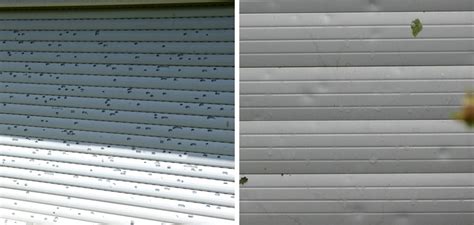How to Get Dents Out of Garage Door: The Ultimate Guide
A dented garage door is more than just an eyesore; it can compromise the door's structural integrity and security. Luckily, many dents are repairable without calling a professional. This ultimate guide will walk you through various methods to remove dents from your garage door, from minor imperfections to more significant damage. We'll cover everything from simple DIY fixes to when it's best to call in the experts.
Assessing the Damage: What Kind of Dent Do You Have?
Before you begin any repair, it's crucial to assess the extent of the damage. Are we dealing with a small, superficial dent, or a larger, more deeply embedded one? The type and severity of the dent will determine the best course of action.
- Minor Dents: These are usually small and shallow, often caused by a minor impact. They may only affect the outer paneling.
- Moderate Dents: These dents are deeper and may involve a larger area of the panel. They might show some distortion of the panel's shape.
- Severe Dents: These dents are extensive, possibly involving damage to the internal structure of the garage door. They may even crack the panel.
How to Remove Small Dents From a Garage Door
For minor dents, you can often achieve surprisingly good results with simple DIY methods.
Using a Plunger:
This surprisingly effective method works best on shallow dents. Simply wet the plunger's cup and place it firmly over the dent. Pull sharply and repeatedly. The suction created can often pop the dent back out.
Dryer Sheet Method:
Believe it or not, a dryer sheet can sometimes work wonders. Apply a warm, damp dryer sheet to the dented area, and gently massage it, working the fibers into the dent to loosen the metal.
Hair Dryer and Compressed Air:
Heat the dented area with a hair dryer for a few minutes. The heat expands the metal. Then, quickly apply compressed air to the back of the panel, potentially pushing the dent out from the inside. Note: This method requires access to the back of the panel, which might involve removing interior panels.
How to Remove Moderate to Severe Dents From a Garage Door
Moderate to severe dents often require more advanced techniques.
Using a Dent Puller Kit:
Dent puller kits are readily available at auto parts stores and online. These kits usually include a suction cup, glue pullers, and various attachments for different dent sizes. Follow the manufacturer's instructions carefully for the best results. This requires patience and precision.
Garage Door Panel Replacement:
For severe dents, especially those involving cracks or significant structural damage, replacing the damaged panel is the best option. This often requires removing the entire section of the garage door and then installing a new panel. You’ll need the correct panel type and color matching your existing garage door to ensure a seamless repair.
When to Call a Professional
While many dents are repairable at home, some situations necessitate professional help:
Is it worth repairing?
If the damage is extensive or you lack the necessary skills or tools, it's always best to consult a professional. They possess the expertise and specialized tools to tackle more complex repairs and minimize further damage.
Extensive Damage or Structural Concerns:
Severe dents, cracks, or damage affecting the overall integrity of the door should be handled by a qualified garage door technician. They'll ensure the safety and proper functioning of your garage door.
Lack of Time or Skills:
If you lack the time, skills, or patience to attempt a DIY repair, hiring a professional saves you time and effort, and ultimately ensures a quality result.
Maintaining Your Garage Door to Prevent Future Dents
Preventing dents is just as important as repairing them. Here are some tips:
- Regular Inspections: Regularly inspect your garage door for any damage, no matter how minor. Addressing small issues early prevents them from becoming larger problems.
- Careful Operation: Operate your garage door carefully, avoiding forceful movements or slamming.
- Protective Measures: Consider installing rubber bumpers or other protective measures on the door or in its path to reduce the risk of impact damage.
- Clear the Area: Keep the area around your garage door clear of obstacles that could cause damage.
By following this comprehensive guide and carefully assessing the damage, you can effectively repair minor dents and know when to seek professional help for more significant issues. Remember, maintaining your garage door proactively is key to preventing costly repairs in the future.

